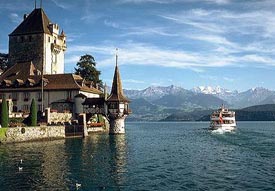Here's a copy of deja.com mailing ...
>> Forum: comp.databases
>> Thread: Object-Relational Mapping Tools for Java
>> Message 1 of 13
Save this thread
back to search results
Subject: Re: Object-Relational Mapping Tools for Java
Date: 07/16/2000
Author: Bruno Conductier
<< previous · next in search >>
http://www.object-relational.com/object-relational.html#CONTENTS
But TopLink seems to be the natural way for you, even more since the recent agreement between BEA and The Object People.
http://www.webgain.com/Products/toplink/toplink_weblogic.htm
We are still waiting for a similar integration for IBM
WebSphere Application Server ...
By the way are you looking only for an object-relational
mapping tool or for an integrated mapping tool for
CMP EJB container ?
To keep in touch with the last announce on the application server tools check
http://www.mgm-edv.de/ejbsig/ejbservers.html
and
http://theserverside.com/home/index.jsp
Bruno
akmal b chaudhri wrote:
> On Fri, 7 Jul 2000, Ramki Hariharan wrote:
> > I am in the team of developing an B2B enterprise application.
> > I have to decide and tell the management a product for the Data Access
> > Layer. That should be easily interacting with WebLogic Server and support
> > very efficient Object Caching.
> >
> > I know there are some fancy tools available in the market like TopLink,
> > CocoBase, Extreme, etc.
>
> I guess if money is no object, you could try the Doug Barry Reports:
>
> http://www.object-relational.com/factbook.html
>
> Another good source of info on O<->R Mapping is the site maintained by
> Wolfgang Keller:
>
> http://www.objectarchitects.de/
and another one ...
ObjectDRIVER also fits your needs.
The greatest interest of objectDRIVER is to provide to each user a personnalized access to
data that fits his/her needs for his/her application without being constrained by the real
data organization in the databases.
The applications do not know how are really the data in the databases.
More, the queried data sources can change without needing the applications to be even recompiled.
The second interest is that it is ODMG-compliant.
In particular, it provides OQL to query data as objects.
You can get objects from the database with an OQL request, update them, and
ObjectDRIVER will update for you the real data in the databases when you commit your transaction.
You can download ObjectDRIVER for evaluation:
http://www.objectdriver.net
http://www.inria.fr/cermics/dbteam/ObjectDriver/
Regards,
Franck
--
Dr Franck Lebastard, Infobjects, +33 (0)4 92 38 77 42,
http://www.infobjects.net
TopLink is described as being the Product of Choice for Object to Relational Mapping, particularly
mapping Java Clases to Relational Databases.
From Andrew McVeigh ...
Basically, TOPLink gives you an object database view of the world, but
allowing you to store your data into an RDBMS.
In many ways, I found its programming model to be similar to Versant's.
The documentation on the programming model is, however, quite woeful.
To a great extent, you can treat TOPLink as an ODBMS.
The idea is that you don't have to constrain your object model very much.
In fact, when designing persistent classes, I tend to design them as I would
for transient java classes, and then right at the end, I usually add the extra
bits of code / artefacts needed for TOPLink.
In particular, TOPLink requires:
1) a default constructor for all classes
2) a public key attribute
3) extra classes for mapping aggregations 1 -> 0..n where the aggregated thing is an interface
4) back pointers for 1 -> 0..n aggregation, if a relationship table is not used
5) some extra stuff which I forget just now :-)
Using this approach, I have modelled a moderately large schema (about 50-100 classes) which turned into a
very nice looking relational schema.
The DBA was quite surprised, and I was pleased to get a nice result.
A trap that a lot of my team fall into is to focus on the relational layer, and
try to build up object models from an idea of what the tables look like.
This is problematic, as I have found that it is far better to model as per a normal OO design and
then add the persistent artifacts in later.
However, a verbatim report from someone with hands-on experience indicates that
caution may be advised, and an alternative Plan would be sensible.
The best approach therefore, would be to do a small Pilot project to establish Proof-of-Concept.
Checking with the Deja.com Discussion Group comp.databases.object
is an excellent way to check the state-of-the-art.
Here's an example of a Contribution in a Thread


 Here's a copy of deja.com mailing ...
Here's a copy of deja.com mailing ...